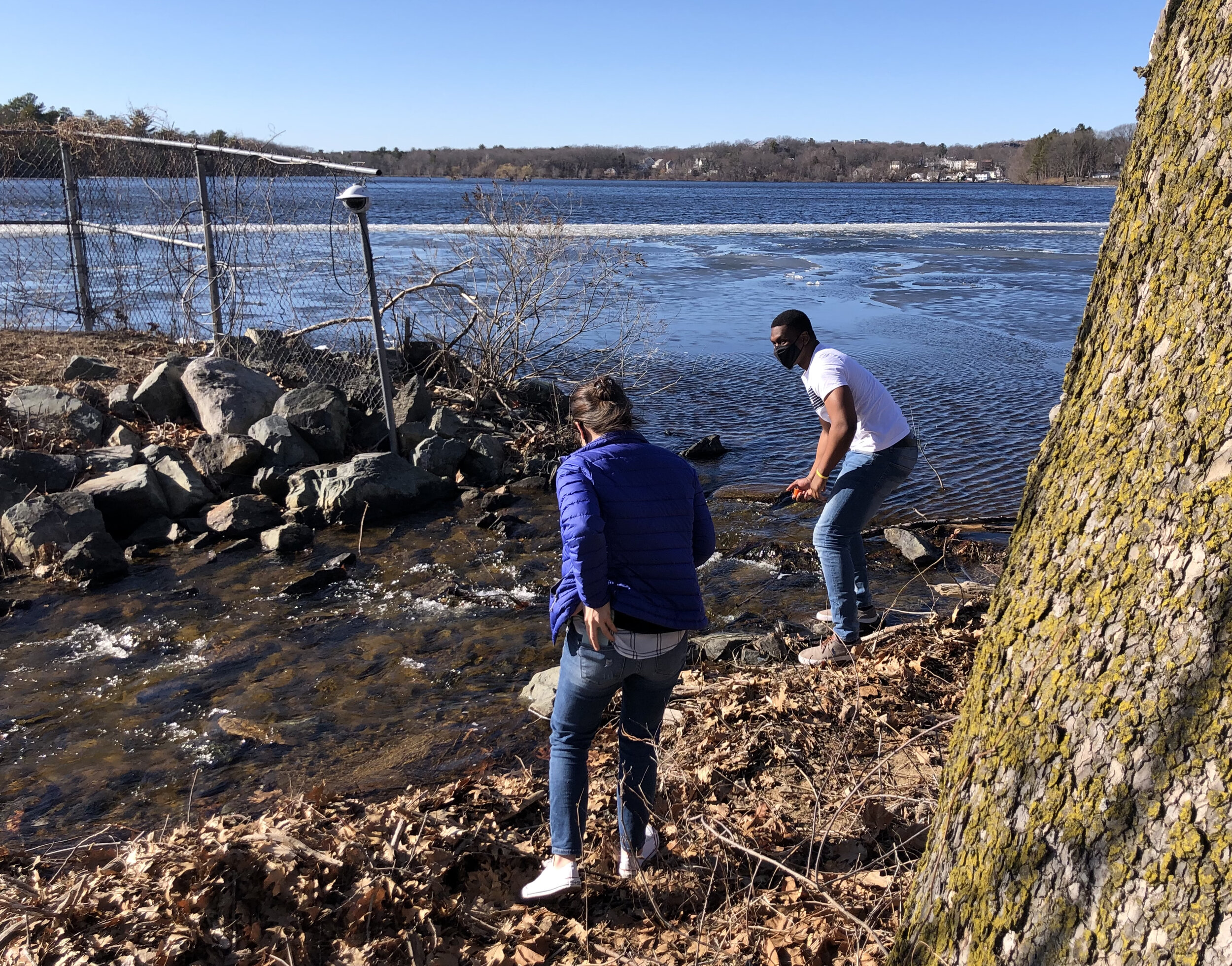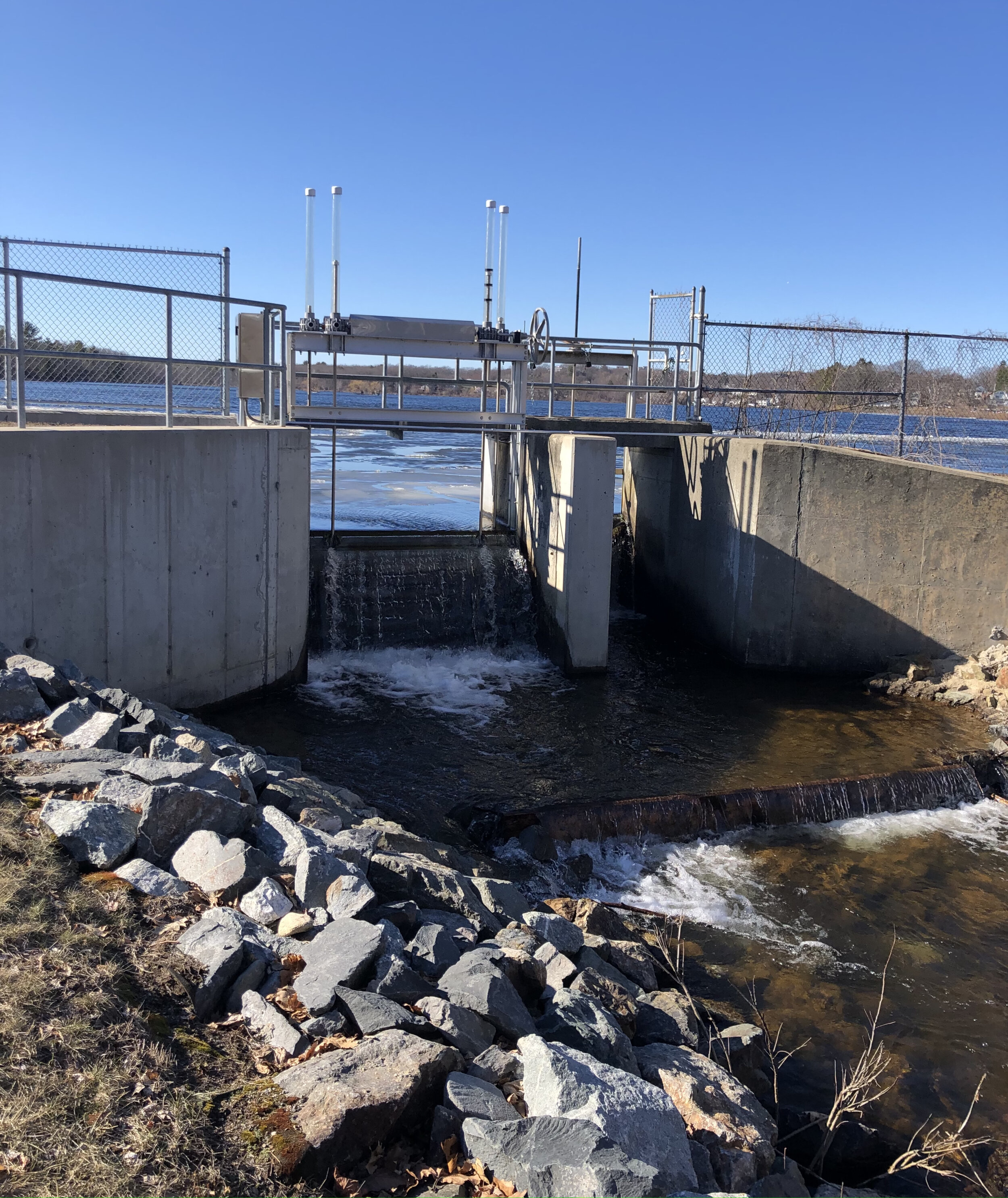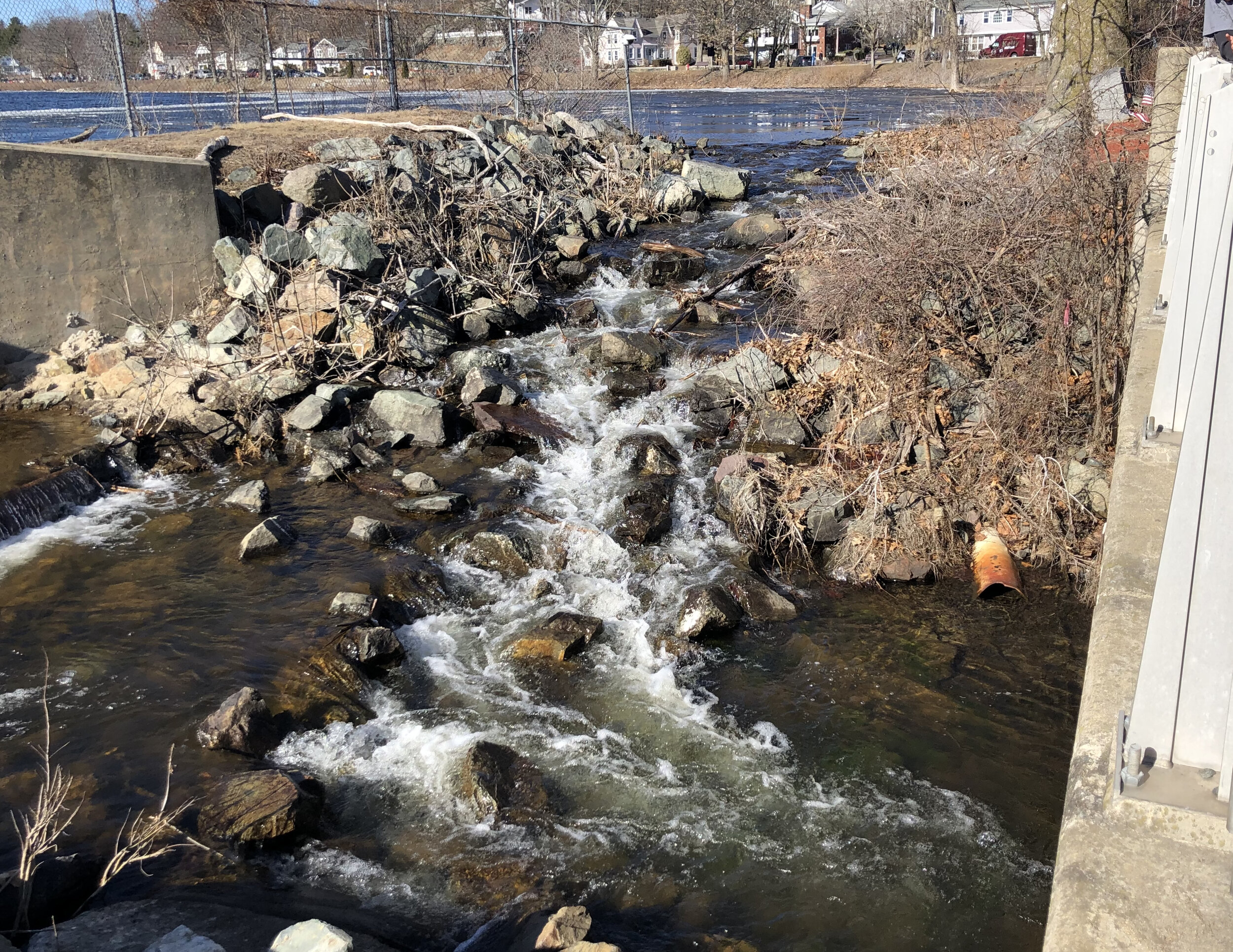$3.9 million in Industri-Plex superfund settlement money is coming to the Mystic to mitigate damage from toxic chemicals released indirectly into the Aberjona River in during the late 19th-mid 20th centuries. The funding from a 2013 settlement will support projects working to offset these damages in downstream tributaries and habitat harmed by the contamination including: the construction of the new Scalley Dam fish bypass into Horn Pond, wetlands restoration near Shaker Glen Conservation area, and riverside habitat restoration at Davidson Park in Winchester.
"This is a huge victory for the watershed and for ecological restoration in the Mystic. This is money from the most famous pollution case in the watershed, maybe in the state's history, the case recorded in 'A Civil Action.' It has been a decades long process to get here,” said Andy Hrycyna, MyRWA’s watershed scientist. “Money paid by polluters is now helping restore the one of the largest herring migrations in Massachusetts, along with wetlands and streams."
“For many decades, serious environmental contamination occurred in the Aberjona River watershed and surrounding wetlands and river systems,” MassDEP Commissioner Martin Suuberg remarked in a prepared statement. “When the natural resources of an ecosystem are damaged, the Commonwealth’s top priority is to ensure that those resources are fully restored, and these projects will help to return the impacted areas to a proper public use.”
Scalley Dam fishway
In 2018 river herring returned to Horn Pond for the first time in more than 100 years. Data from MyRWA’s river herring migration program showed nearly 25,000 made it to Horn Pond in 2018. Nearly 3/4 million river herring spawned in the Mystic Lakes in 2019, indicating the potential for Horn Pond to support thousands more spawning fish. Scientists believe it’s the steep riprap spillway preventing more river herring from making into this additional spawning habitat. The renovation of the spillway and addition of a fish ladder is expected to cost around $1 million. Money will also go towards restoration of the riverbanks and fish habitats along Horn Pond brook--cited to reduce flooding along Lake Avenue and support the river herring migration—a project that MyRWA has partnered with the City of Woburn to implement.
“The City of Woburn will construct a new fishway on the site. The fishway will likely be sited west of Scalley Dam, opposite the existing bypass channel,” a project narrative released in September reads. “The design for the site may incorporate a camera and viewing area for the public to view migrating fish, and a bioswale or rain garden at the adjacent parking lot to reduce the discharge of stormwater runoff and associated pollutants into Horn Pond.”
“The City of Woburn estimates that an improved fishway will eventually allow up to 500,000 herring to enter Horn Pond, compared to an estimated 25,000 fish that passed the dam in 2018. Increases in fish migration success are anticipated in the first migration season following fishway construction (contingent on passage success at downstream barriers, including Center Falls Dam, which passed approximately 109,000 fish in 2018),” the study authors furthered.
Shaker Glen Extension restoration
Nearly $2 million will be allocated to restoration of Shaker Glen Brook where the channel was apparently diverted in the 1950s in order to construct a bowling alley. The area in question, a 12-acre parcel of land known as Shaker Glen Extension by Woburn Four Corners, is also situated right nearby the 20-acre Shaker Glen Conservation site.
Besides the two major Woburn proposals, the mitigation funding will also be utilized to restore riverside habitats by Winchester’s Davidson Park, while another $125,000 will be provided to the Mystic River Watershed Association for educational purposes.
The 245-acre Industri-Plex Superfund site is the former home of glue-making and chemical manufacturers back into the 19th century. Wetlands, the Aberjona river and floodplains were contaminated with arsenic, chromium and lead. In 2013, the Trustees, a collection of state and federal environmental agencies, settled with responsible parties for $4.2 million. Trustee councils recover damages so that natural resources can be restored at no taxpayer cost.
Read more about the projects here:
NOAA Damage Assessment for the Industri-Plex Superfund Site
Daily Times Chronicle, Woburn
Woburn Patch article




